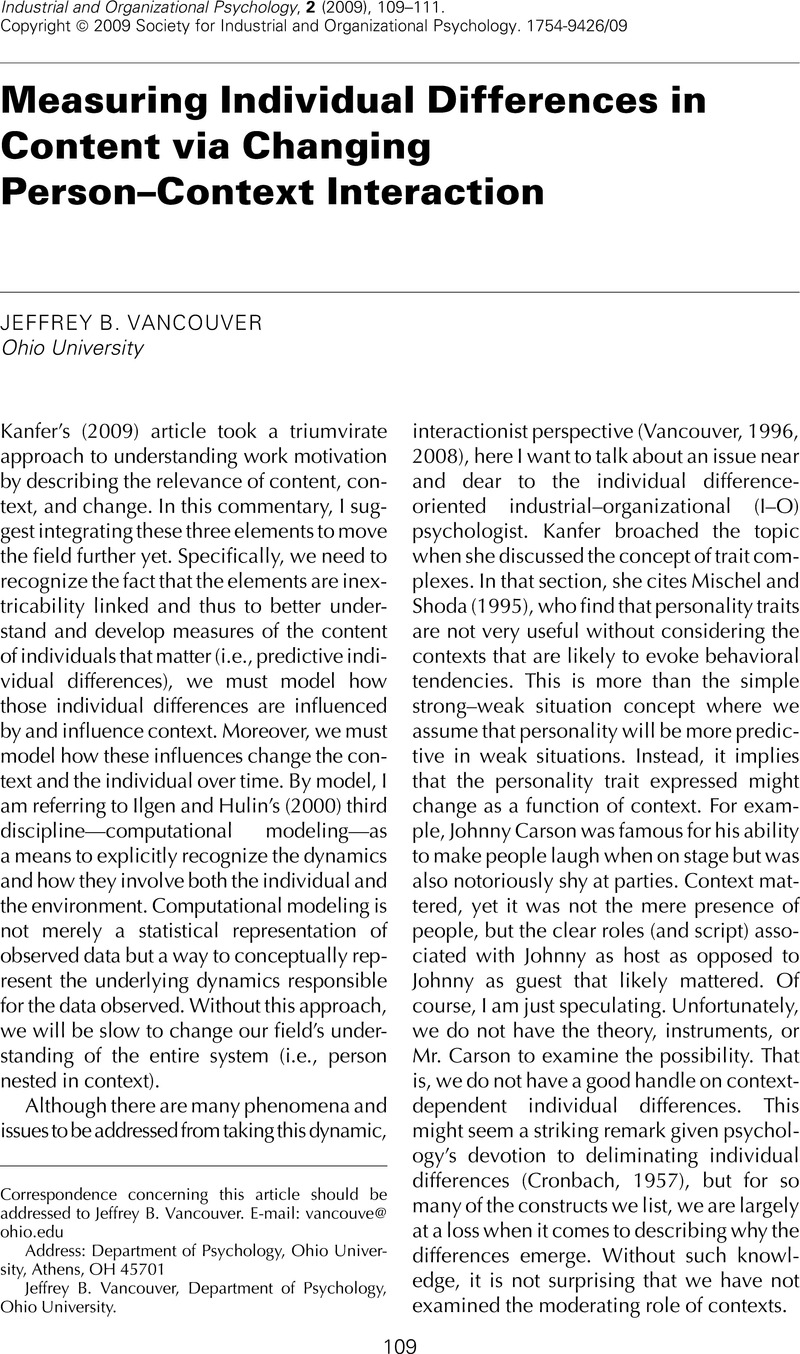Crossref Citations
This article has been cited by the following publications. This list is generated based on data provided by Crossref.
Kanfer, Ruth
2009.
Work Motivation: Advancing Theory and Impact.
Industrial and Organizational Psychology,
Vol. 2,
Issue. 1,
p.
118.
Vancouver, Jeffrey B.
Wang, Mo
and
Li, Xiaofei
2020.
Translating Informal Theories Into Formal Theories: The Case of the Dynamic Computational Model of the Integrated Model of Work Motivation.
Organizational Research Methods,
Vol. 23,
Issue. 2,
p.
238.
Vancouver, Jeffrey B.
2020.
The Interdisciplinary Handbook of Perceptual Control Theory.
p.
463.



